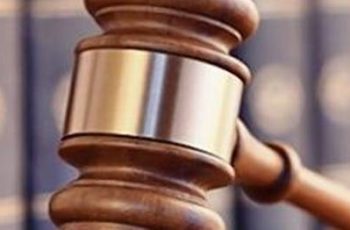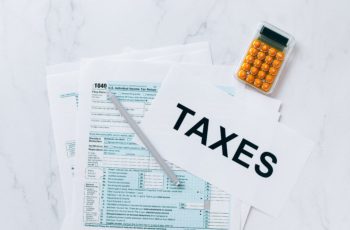Formation of Insolvency and Bankruptcy Code, 2016
INTRODUCTION:
After the creation of the Insolvency and Bankruptcy Code, 2015 with inside the Lok Sabha on 21st December 2015, it became mentioned the Joint Committee. On this sort of referral the Committee had provided its tips and a changed Bill primarily based totally on its suggestions. In May 2016 each the Houses of Parliament exceeded the Insolvency and Bankruptcy Code, 2016. The predominant goal of these monetary reforms is to consciousness on creditor drove insolvency decision.
SHIFTING PRESENT REGIME ‘DEBTOR IN POSSESSION’ TO A ‘CREDITOR IN CONTROL’:
In India, the Insolvency and Bankruptcy Code, 2016 is one matured step in the direction of settling the legal role with recognize to monetary disasters and insolvency. To offer smooth go out with a painless mechanism in instances of insolvency of people in addition to corporations, the code has full-size fee for all stakeholders which includes diverse Government Regulators. Introduction of this Code has carried out away with overlapping provisions contained in diverse legal guidelines –
• Sick Industrial Companies (Special Provisions) Act, 1985;
• The Recovery of Debts Due to Banks and Financial Institutions Act, 1993;
• The Securitization and Reconstruction of Financial Assets and Enforcement of Security Interest Act, 2002;
• The Companies Act, 2013
Before the enactment of this Code, there have been more than one groups coping with the topics referring to debt, defaults, and insolvency that commonly results in delays, complexities and better fees within side the method of Insolvency decision. The ‘Board for Industrial and Financial Reconstruction (BIFR)’, one of the Insolvency Regulators, has been an illusion for sick business corporations. It is anticipated that the Insolvency and Bankruptcy Code, 2016 will expedite the instances pending for a long term and clear up them inside one hundred eighty days with a similarly length of ninety days.
APPLICABILITY OF THE CODE:
The provisions of the Code shall practice for insolvency, liquidation, voluntary liquidation or financial disaster of the subsequent entities:-
• Any enterprise included beneath the Companies Act, 2013 or beneath any preceding regulation,
• Any different enterprise ruled via any unique Act in force,
• Any Limited Liability Partnership beneath the LLP Act, 2008
• Any different frame of entity included beneath other regulations in force
Moreover, this code shall practice most effective if minimal quantity of the default is Rs. 1 lakh. However, by way of issuing a notification in Official Gazette, Central Government may also specify the minimal quantity of default of better fee, which shall now no longer be greater than Rs. 1 Crore (Which has been increased through a Notification during Covid-19 Lockdown).
EXCEPTIONS:
There is an exception to the applicability of the Code that it shall now no longer practice to company men and women who regulates monetary carrier or carriers like- Banks;
Financial Institutions; and
Insurance Corporations
OBJECTIVES OF THE CODE:
A sound legal framework of financial disaster regulation is needed for attaining the subsequent goals:-
a) Improved Adjudication Mechanism to deal with conflicts among lenders (Creditors) and the debtors.
b) Set a restriction among malfeasance and commercial enterprise failure
c) The financial disaster regulation will create a platform for negotiation among lenders and outside financiers that can create the opportunity of such rearrangements.
d) It also can offer flexibility for events to reach on the maximum optimal solution at some point of negotiations.
e) Macroeconomic downturns will be put on check.
An infirm insolvency regime results in the stereotype of “wealthy promoters of defaulting entities” producing theories such as misconduct is the cause for all the defaults made in the long run. Clear allocation of those losses is a result of a well-described financial disaster framework. Taxes, inflation, foreign money depreciation, expropriation, or salary or intake suppression is the usual place of practices of loss allocation. These ought to have an effect on overseas lenders, small commercial enterprise proprietors, savers, workers, proprietors of monetary and non-monetary property, importers, and exporters.
KEY OBJECTIVES OF THE CODE:
The sole purpose of the Insolvency and Bankruptcy Code, 2016 is to offer a justified stability among all the stakeholders of the enterprise, in order to make them revel in terms of business and credit score.
The goal at the back of Insolvency and Bankruptcy Code, 2016 are indexed below-
• To consolidate and amend the legal guidelines referring to re-business enterprise and insolvency decision of company men and women, partnership companies, and people.
• To repair time lapse in the execution of the regulation and to set out a time-bound process for insolvency proceedings (i.e. one hundred eighty days)
• To maximize the value of property and business
• To stabilize all stakeholders’ interest in the company
• To set up an Insolvency and Bankruptcy Board of India as a regulatory frame for insolvency and financial disaster regulation
• To set up better stages of debt financing throughout a huge sort of debt instruments
• To offer painless revival mechanism for entities
• To address go-border insolvency
• To clear up India’s horrific debt trouble by way of developing a database of defaulters
The preamble of the Insolvency and Bankruptcy Code, 2016 (Code) specifies as follows:
“To consolidate and amend the laws relating to reorganization and insolvency resolution of corporate persons, partnership firms and individuals in a time bound manner for maximization of value of assets of such persons, to promote entrepreneurship, availability of credit and balance the interests of all the stakeholders including alteration in the order of priority of payment of Government dues and to establish an Insolvency and Bankruptcy Board of India, and for matters connected therewith and incidental thereto.”
The Code repeals the Presidency Towns Insolvency Act, 1909, and Provincial Insolvency Act, 1920, and similarly amends diverse laws that include:
1. The Indian Partnership Act, 1932
2. The Central Excise Act, 1944
3. The Income Tax Act, 1961
4. Security and Reconstruction of Financial Assets and Enforcement of Security Interest Act, 2002;
5. Sick Industrial Companies, the Repeal Act, 2003
6. Limited Liability Partnership Act, 2008,
7. The Companies Act, 2013
This is a complete Code as far as insolvency lawsuits are concerned and could have overriding impact over all different legal guidelines related to insolvency lawsuits. Further, all other Civil Courts and different Government Adjudication forums are barred from entertaining any kind of insolvency petition that falls under the Code.
CORPORATE INSOLVENCY RESOLUTION PROCESS
A) That, under Chapter II of the Code, a Financial Creditor or, an Operational Creditor or the Company Debtor itself may also provoke corporate insolvency if the Corporate Debtor had defaulted in making payments. The corporate insolvency can be initiated by making an application before Adjudicating Authority i.e. National Company Law Tribunal. In case of operational creditor, a Demand Notice in the prescribed form must be sent at least 10 days earlier to the day of filing an application before Adjudicating Authority whereas in other cases, the petitioner can file the application directly.
B) Once the application is admitted by Adjudicating Authority, the insolvency proceedings against the Corporate Debtor needs to be finished within a length of one hundred eighty days. If the insolvency process is not completed within the period provided, then the Resolution Professional can make an application for extension of timelines and upon satisfaction on the reasons provided, the Adjudicating Authority may extend the time for another 90 days subject to the condition that whole extension will not go beyond 330 days.
C) After admission of application, the Moratorium shall apply which suspend or stay all the proceedings against the Corporate Debtor until the completion of Corporate Insolvency Resolution Process.
D) The Adjudicating Authority will appoint an Interim Resolution Professional (IRP) upon the recommendation made to them in the application subject to the conditions prescribed and the IRP will continue to run the business and call for claims from the creditors until the Committee of Creditors decides to change him.
E) As said earlier, the control of the management and business shall vest with the IRP and he will scrutinize the claims submitted before him followed by the public announcement made in this regard. Then Committee of Creditors will be constituted in accordance with the provisions of the Act.
F) The IRP will call for Resolution Plans from Prospective Resolution Applicants and those Resolution Plans will be submitted before CoC for obtaining approval. The CoC will go through the submitted the plans and may either approve the plan or disapprove the plan with the required majority votes. If no Resolution Plan is received within 180 days then the CoC may pass a resolution to liquidate the assets of the Corporate Debtor to pay off the debts pending.
G) If CoC approves the Resolution plan then the same will be submitted before NCLT (Adjudicating Authority) for final approval. Once the NCLT is satisfied that all required conditions are met, then the NCLT may pass an order in this regard approving the plan.
LIQUIDATION PROCESS
A) The Liquidation process against the Corporate Debtor can be initiated if
(i) No Resolution Plan is submitted within the prescribed time-line;
(ii) If the Committee of Creditors decide to liquidate the Corporate Debtor;
(iii) If the Corporate Debtor contravenes the terms of Resolution Plan approved by the CoC;
(iv) If the NCLT rejects the Resolution Plan for non-compliance of requirements mentioned under Insolvency and Bankruptcy Code, 2016.
B) The Resolution Professional will continue to act as Liquidator in the event of liquidation unless the Adjudicating Authority appoints a new different liquidator.
C) For the purpose of liquidation, the liquidator maintains the property, which is the subject matter of liquidation, and he will account for the expense and profits arise out of such properties.
D) After verifying the claims submitted before the Liquidator, he may either accept or reject the claims after recording the reasons for the same.
E) The proceeds from the sale of the liquidation property will be allotted among the creditors and other respective persons who have right to claim, in accordance with the waterfall provided for the payments under the Code.
The waterfall provided under Section 53 of the Code as follows:
• Insolvency Resolution Process and Liquidation Cost
• Secured creditors if he has relinquished security + Workmen’s due for preceding 24 months
• Wages and unpaid dues to employees (other than workmen) for preceding 12 months
• Unsecured creditors
• Central Government and State Government dues + Secured creditor for an unrealized amount.
• Remaining debts or dues
• Preferential shareholders
• Equity shareholders
Once the assets of the Corporate Debtor are completely liquidated, then the Adjudicating Authority shall dissolve the Corporate Debtor upon application by Liquidator.
Nevertheless, it is important to note that National Company Law Tribunal will have jurisdiction to hear and decide the cases concerning insolvency and liquidation of Companies that situated within the territorial jurisdictions of respective Tribunals.
INSOLVENCY RESOLUTION AND BANKRUPTCY FOR INDIVIDUALS AND PARTNERSHIP COMPANIES:
The Code contemplates procedures for insolvency of individuals and partnership companies. Under the primary method a debtor who fulfils sure situations laid out in code, could make software earlier than the Adjudicating Authority for clean begin for discharge of his qualifying debt. Under the second one method the debtor shall put together a reimbursement plan for restructuring his money owed or affairs in session with the decision expert to be located earlier than the lenders. If the identical is ordinary via way of means of the lenders, then the Adjudicating Authority passes an order approving the identical, if now no longer the borrowers or lenders can record software for financial disaster. It is same as the insolvency process provided for the companies but with slight differences in the procedures. Once the application is submitted, the Resolution Professional will look into the application and produce a report before the Adjudicating Authority suggesting either admission or rejection of the application.
Upon analysing the report submitted by the Resolution Professional, the Tribunal will make its final decision on admission or rejection and if the application is admitted, then the Moratorium period will commence which will last for 180 days. The process will commence with inviting claims from the creditors and it will end with implementation of repayment plan, which would be an approved one by the Committee of Creditors. Once the Resolution Professional furnishes the prescribed documents after successful completion of repayment plan, the Adjudicating Authority shall pass a Discharge Order subject to conditions.
The Code also provides for the special feature to individuals and partnership firm to have a ‘Fresh Start’ upon fulfilling the conditions embedded in section 82(2) of the Code.
Similar to National Company Law Tribunal, the Debt Recovery Tribunal is the competent tribunal to try and decide all the insolvency matters with respect to individuals and partnership firms.
REGULATION OF INSOLVENCY PROFESSIONALS, AGENCIES AND INFORMATION UTILITIES
The Code contemplates advent of the Insolvency and Bankruptcy Board of India. The board has the powers to modify and oversee the ethical and professional conduct of Resolution Professionals, Recruitments, Granting membership to Insolvency Professional Agencies, carrying out inspection and investigations, levying fees for registration and renewal of Insolvency Professional Agencies, regulating Information Utilities, etc.
CONCLUSION
The Code has covered all the backlogs left by the previous insolvency legislations and in addition, it has provided for new specific features such as appointment of Resolution Professional, Moratorium period, Fresh start process, Time-bound resolution mechanism, etc. which added more value and strength to the new Code. It is indispensable for the people to agree that this Code is indeed a boon in the present era of developing business relations.
RONIT SHARMA
3rd Year, B.A., LL.B (Hons), Symbiosis Law School, Pune









 He holds a Bachelor’s and Master’s Degree in Corporate Secretaryship and a Degree in Law. He is a Fellow member of the Institute of Company Secretaries of India and an Associate Member of the Corporate Governance Institute, UK and Ireland. He has also completed a program from ISB on ‘Value Creation through Mergers and Acquisitions.
He holds a Bachelor’s and Master’s Degree in Corporate Secretaryship and a Degree in Law. He is a Fellow member of the Institute of Company Secretaries of India and an Associate Member of the Corporate Governance Institute, UK and Ireland. He has also completed a program from ISB on ‘Value Creation through Mergers and Acquisitions. Mr P Muthusamy is an Indian Revenue Service (IRS) officer with an outstanding career of 30+ years of experience and expertise in all niche areas of Indirect Taxes covering a wide spectrum including GST, Customs, GATT Valuation, Central Excise and Foreign Trade.
Mr P Muthusamy is an Indian Revenue Service (IRS) officer with an outstanding career of 30+ years of experience and expertise in all niche areas of Indirect Taxes covering a wide spectrum including GST, Customs, GATT Valuation, Central Excise and Foreign Trade. During his judicial role, he heard and decided a large number of cases, including some of the most sensitive, complicated, and high-stake matters on insolvency and bankruptcy, including many cases on resolution plans, shareholder disputes and Schemes of Amalgamation, De-mergers, restructuring etc.,
During his judicial role, he heard and decided a large number of cases, including some of the most sensitive, complicated, and high-stake matters on insolvency and bankruptcy, including many cases on resolution plans, shareholder disputes and Schemes of Amalgamation, De-mergers, restructuring etc., Ms. Sarah Abraham has been enrolled with the Bar Council of Tamil Nadu since 1998. Her areas of practice include Shareholder Disputes, Corporate Compliances, Mergers and Acquisitions, Private Equity/ Venture Capital Agreements and allied disputes, Information Technology Contracts, Intellectual Property, General Commercial Agreements, Litigation, Arbitration and Mediation.
Ms. Sarah Abraham has been enrolled with the Bar Council of Tamil Nadu since 1998. Her areas of practice include Shareholder Disputes, Corporate Compliances, Mergers and Acquisitions, Private Equity/ Venture Capital Agreements and allied disputes, Information Technology Contracts, Intellectual Property, General Commercial Agreements, Litigation, Arbitration and Mediation. A K Mylsamy is the Founder, Managing Partner and the anchor of the firm. He holds a Degree in law and a Degree in Literature. He is enrolled with the Bar Council of Tamil Nadu.
A K Mylsamy is the Founder, Managing Partner and the anchor of the firm. He holds a Degree in law and a Degree in Literature. He is enrolled with the Bar Council of Tamil Nadu. M Subathra holds a Degree in law and a Master’s Degree in International Business Law from the University of Manchester, United Kingdom. She is enrolled with the Bar Council of Tamil Nadu.
M Subathra holds a Degree in law and a Master’s Degree in International Business Law from the University of Manchester, United Kingdom. She is enrolled with the Bar Council of Tamil Nadu. Mr. K Rajendran is a former Indian Revenue Service (IRS) officer with a distinguished service of 35 years in the Indirect Taxation Department with rich experience and expertise in the fields of Customs, Central Excise, Service Tax and GST. He possesses Master’s Degree in English literature. Prior to joining the Department, he served for the All India Radio, Coimbatore for a period of about 4 years.
Mr. K Rajendran is a former Indian Revenue Service (IRS) officer with a distinguished service of 35 years in the Indirect Taxation Department with rich experience and expertise in the fields of Customs, Central Excise, Service Tax and GST. He possesses Master’s Degree in English literature. Prior to joining the Department, he served for the All India Radio, Coimbatore for a period of about 4 years. An MBA from the Indian Institute of Management, Calcutta, and an M.Sc. in Tourism Management from the Scottish Hotel School, UK, Ashok Anantram was one fo the earliest IIM graduates to enter the Indian hospitality industry. He joined India Tourism Development Corporation (ITDC) in 1970 and after a brief stint proceeded to the UK on a scholarship. On his return to India, he joined ITC Hotels Limited in 1975. Over the 30 years in this Organisation, he held senior leadership positions in Sales & Marketing and was its Vice President – Sales & Marketing. He was closely involved in decision making at the corporate level and saw the chain grow from a single hotel in 1975 to a very large multi-brand professional hospitality group.
An MBA from the Indian Institute of Management, Calcutta, and an M.Sc. in Tourism Management from the Scottish Hotel School, UK, Ashok Anantram was one fo the earliest IIM graduates to enter the Indian hospitality industry. He joined India Tourism Development Corporation (ITDC) in 1970 and after a brief stint proceeded to the UK on a scholarship. On his return to India, he joined ITC Hotels Limited in 1975. Over the 30 years in this Organisation, he held senior leadership positions in Sales & Marketing and was its Vice President – Sales & Marketing. He was closely involved in decision making at the corporate level and saw the chain grow from a single hotel in 1975 to a very large multi-brand professional hospitality group. Mani holds a Bachelor Degree in Science and P.G. Diploma in Journalism and Public Relations. He has a rich and varied experience of over 4 decades in Banking, Finance, Hospitality and freelance Journalism. He began his career with Andhra Bank and had the benefit of several training programs in Banking.
Mani holds a Bachelor Degree in Science and P.G. Diploma in Journalism and Public Relations. He has a rich and varied experience of over 4 decades in Banking, Finance, Hospitality and freelance Journalism. He began his career with Andhra Bank and had the benefit of several training programs in Banking. Mr. Kailash Chandra Kala joined the Department of Revenue, Ministry of Finance as ‘Customs Appraiser’ at Mumbai in the year 1993.
Mr. Kailash Chandra Kala joined the Department of Revenue, Ministry of Finance as ‘Customs Appraiser’ at Mumbai in the year 1993.
 S Ramanujam, is a Chartered Accountant with over 40 years of experience and specialization in areas of Corporate Tax, Mergers or Demergers, Restructuring and Acquisitions. He worked as the Executive Vice-President, Group Taxation of the UB Group, Bangalore.
S Ramanujam, is a Chartered Accountant with over 40 years of experience and specialization in areas of Corporate Tax, Mergers or Demergers, Restructuring and Acquisitions. He worked as the Executive Vice-President, Group Taxation of the UB Group, Bangalore. K K Balu holds a degree in B.A and B.L and is a Corporate Lawyer having over 50 years of Legal, Teaching and Judicial experience.
K K Balu holds a degree in B.A and B.L and is a Corporate Lawyer having over 50 years of Legal, Teaching and Judicial experience. Justice M. Jaichandren hails from an illustrious family of lawyers, academics and politicians. Justice Jaichandren majored in criminology and then qualified as a lawyer by securing a gold medal. He successfully practiced in the Madras High Court and appeared in several civil, criminal, consumer, labour, administrative and debt recovery tribunals. He held office as an Advocate for the Government (Writs Side) in Chennai and was on the panel of several government organizations as senior counsel. His true passion lay in practicing Constitutional laws with focus on writs in the Madras High Court. He was appointed Judge, High Court of Madras in December 2005 and retired in February 2017.
Justice M. Jaichandren hails from an illustrious family of lawyers, academics and politicians. Justice Jaichandren majored in criminology and then qualified as a lawyer by securing a gold medal. He successfully practiced in the Madras High Court and appeared in several civil, criminal, consumer, labour, administrative and debt recovery tribunals. He held office as an Advocate for the Government (Writs Side) in Chennai and was on the panel of several government organizations as senior counsel. His true passion lay in practicing Constitutional laws with focus on writs in the Madras High Court. He was appointed Judge, High Court of Madras in December 2005 and retired in February 2017. S Balasubramanian is a Commerce and Law Graduate. He is a member of the Delhi Bar Council, an associate Member of the Institute of Chartered Accountants of India, the Institute of Company Secretaries of India and Management Accountants of India.
S Balasubramanian is a Commerce and Law Graduate. He is a member of the Delhi Bar Council, an associate Member of the Institute of Chartered Accountants of India, the Institute of Company Secretaries of India and Management Accountants of India.